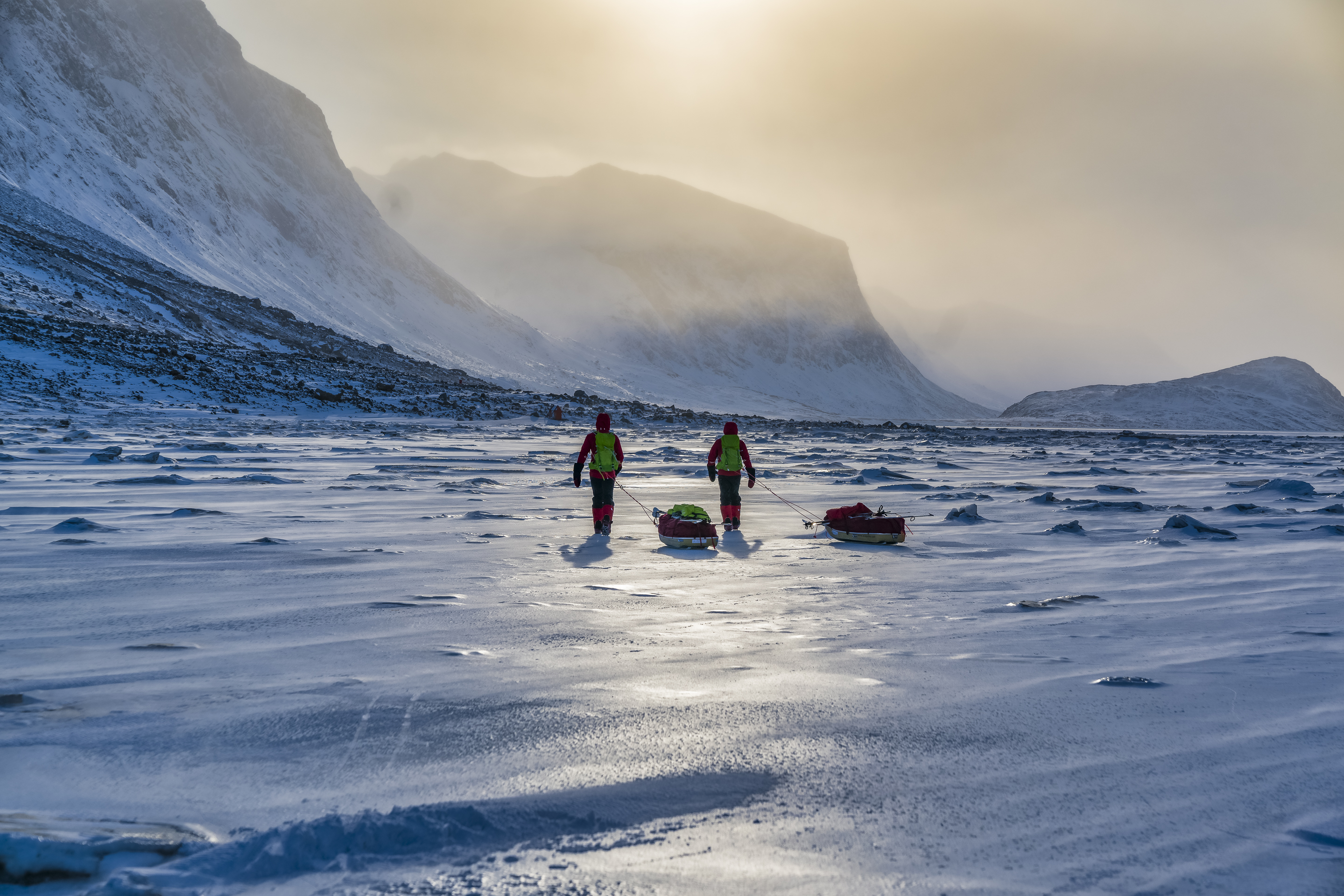Unexplored and Unpredictable

Canadian adventurer, ultrarunner, and youth expedition non-profit impossible2Possible founder Ray Zahab is no stranger to big adventures. Over the past decade-plus, he’s crossed some of the world’s most unforgiving terrain, including the Sahara, Atacama and Namib Deserts, Baffin Island, Siberia and South Pole—all on foot. Last year, he and fellow adventurer, Italy’s Stefano Gregoretti, set their sights on the Kamchatka Peninsula in the Russian Far East. At 1,250k (776 miles), the Kamchatka River is not only imposing in its length and beauty, but is also flanked by a massive belt of active volcanoes, heavy snow and ice, and a famously high abundance of brown bears. Known as the “Land of Fire and Ice,” it’s his most ambitious expedition to date.
No matter the adventure, he says having the right gear is a must. During each of his epic “global cold” treks, Kahtoola MICROspikes have allowed him and his partners to safely complete their journeys. Ahead of stepping into the Kamchatka unknown on Feb. 19, Zahab spoke to the importance of quality gear, getting youth outside, and what attracts him to big, human-powered adventures.
Your upcoming TransKamchatka Expedition. You’ve called it “unthought of.” Why?
I was referencing my own initial thoughts. I’ve been doing expeditions for years (I’ve ran more than 14,000k (7,000 miles) across deserts and completed multiple unsupported cold expeditions to South Pole, Arctic, Siberia), and always dreamed of going there, but it was logistically complicated. I thought maybe it wouldn’t happen.
In an environment full of extremes, what makes this expedition your most extreme to date?
Mostly, it’s the unexpected. We have a great team in Russia, and have done tons of research, but much of our route is very little, if ever, explored in winter.
What attracts you to these big, unsupported forms of human-powered adventure?
Last year I ran 1,850k (1,150 miles) from south to north through the Namib Desert, and have ran across deserts all over the world, but on those expeditions, even though I’m covering 60–80k per day navigating across dunes, mountains, and salt flats, I do have support every 20–50k as I need water. Trying to carry everything I need would slow me to a crawl, and I’m way to impatient for that. But there is something about being self-contained and unsupported that I love, and when hauling a sled across ice or snow for days on end, you become so “contained” in your ability to go and explore and cross a vast distance just with what you are hauling. I love it!

You’ve used Kathoola traction products for a decade. Why Kahtoola?
My buddy Kevin [Vallely] and I used Kahtoola MICROspikes on both our unsupported world record South Pole expedition in 2009 and our 2010 unsupported winter crossing of Lake Baikal in Siberia. They are virtually indestructible, and a piece of gear I can truly count on. Plus, they pack down small.
What do you look for when selecting winter traction gear for a big expedition?
Reliability is key. If it’s broken, it’s dead weight. Traction is key, too. We have scaled glaciers in Baffin Island numerous times with MICROspikes. They never let me down.
What’s your most memorable expedition moment with MICROspikes?
I think it would have to be crossing Lake Baikal. The sound of the crunch under your feet and the MICROspikes digging into the black ice—memorable!

In what way will your foundation, impossible2possible, be involved in this expedition?
Students will be able to follow, ask us questions, and learn about who lives in Kamchatka at TransKamchatka.com.
What’s the most important part, especially today, of getting youth involved in expeditions?
I want youth to truly realize that they can accomplish anything they set their minds to. This year, we have another youth expedition planned—you can see details at Impossible2Possible.com. All of our i2P Youth Expeditions are 100% free, and all of my expeditions are in support of i2P.
With so many “global cold” treks logged and this being your biggest one yet, what have you learned and what do you hope to accomplish this time around?
To continue to learn and continue to improve in bringing these expeditions into classrooms, and classrooms onto the expeditions!
Get live satellite updates from Ray Zahab and Stefano Gregoretti during their Trans Kamchatka Expedition on Instagram or by visiting TransKamchatka.com.

